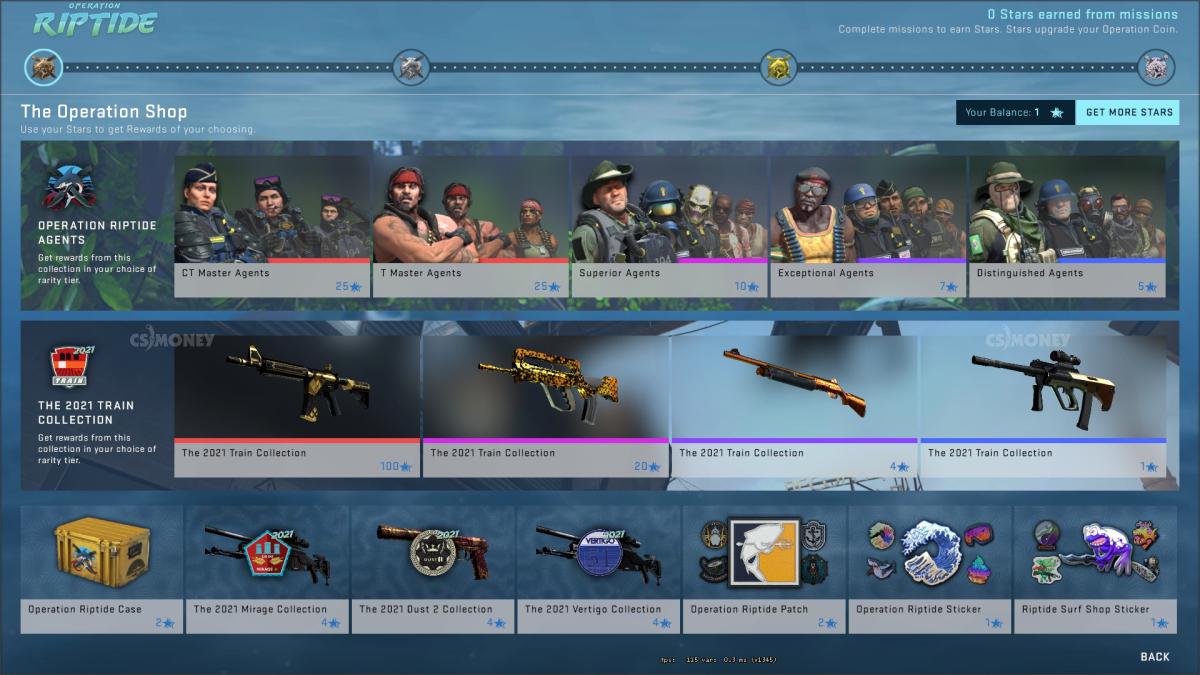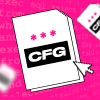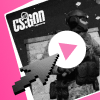
In the Counter-Strike: Global Offensive community, there’s a stir happening now. Some players noticed the beginnings of pay-to-win mechanics in the operation tasks. The CS.MONEY Blog is here to find out if it’s time to sound the alarm and what pay-to-win is all about.
The reason to be concerned

Among the missions of Operation Riptide’s last week, there are two that are much easier to complete with a skin or an agent of that operation: Pull Away From The Crowd and Tidal Flow. In the former, you have to score 100 kills in a single deathmatch — or 30 frags if you use an operation agent. The latter: score 25 frags over a match in regular mode — or 7 frags with an Operation Riptide skin.
What’s pay-to-win?

Before we continue, we need to define the very concept of pay-to-win. Usually, this term refers to the mechanics that allow you to get an advantage in a game by spending money on it.
One example would be the M14 EBR rifle in Call of Duty Warzone. You can buy a Line Breaker skin for it with real money. Last April, the rifle with the skin dealt a lot more damage than the regular one due to a bug. The result was a pay-to-win situation, with owners of the M14 EBR Line Breaker dominating over all other players with this gun for a brief period of time.
Pay-to-win & CS:GO operations

Obviously, Operation Riptide does feature pay-to-win, albeit in a very mild form. However you slice it, players who’ve spent money on an agent or a skin, or got it from the operation battle pass, get an advantage over others. And even though this advantage is minuscule and doesn’t affect the gameplay directly, it’s still there. It’s pay-to-win.
Не первый раз
This is not the first time Valve has tried to pull off a trick like that. And no, we’re not referring to Team Fortress 2, where additional items are generally worse than standard ones. Previously, the company has already released a map version in Dota 2 which makes finding your way in the woods much easier. What’s more, even Operation Wildfire witnessed a similar precedent. Back then, it was possible to get extra experience points.
Nevertheless, none of these cases resulted in any catastrophic consequences. By catastrophic consequences, we refer to any real mechanics-based advantage in-game. There’s only one problem with this situation: with the first step towards pay-to-win has already taken, each subsequent one will be easier to take.
It’s too early to panic yet
Re-introducing skin-related conditions into the game is a very bad move in itself. Nevertheless, there’s a huge difference between it and mobile trash with hundreds of thousands of dollars worth of donation tables. Valve is unlikely to stoop that low — for multiple reasons.
First, Counter-Strike: Global Offensive is an extremely successful and long-lived game. And not just by the standards of competitive first-person shooters — by the standards of video games in general. This year, CS:GO will turn 10 years old, and it’s still among the top 3 games on Steam in terms of online presence. A success of this magnitude is only seen in isolated projects like Warframe or World of Warcraft.
Secondly, all previous attempts to further monetize the game factored in the competitive aspect. Skins and stickers don’t provide any advantage and don’t mislead other players in any way. Transactions don’t give extra perks to those who make them. Even the agents that caused such a stir were eventually “polished” through a visibility option, with the character models themselves overhauled to achieve better readability on maps.
Last but not least, Valve has successfully converted the game into a free-to-play model and, apparently, only benefited from it. After the transition to free-to-play distribution, the number of players has only increased, which means the company gets even more money from opened cases and sold skins on the Marketplace. Aggressive monetization will cause nothing but a decrese in audiences.
The problem isn’t the skins

Speaking of the Operation Riptide missions, we must mention two things. First, most players already had skins and operation agents by the last week of the operation. With that said, even though Valve’s decision looks inappropriate, its harm is still incredibly limited.
What’s much worse is that Operation Riptide isn’t exactly a cornucopia content. In this regard, CS:GO is inferior to other shooters like Fortnite or Rainbow Six Siege — no two ways about it. The Battle Royale from Epic Games delivers a whole bunch of content each season, bringing diversity into the usual gameplay. For instance, the game recently saw the drop of Spider-Man’s web-shooters. The new movement option has significantly changed the dynamics of fighting and moving around the map.
In Operation Riptide, players are encouraged to do what they normally do. Just launch the game and play. With the same guns. On the same maps. With the same conditions. Over and over again. It’s boring, Valve! Cooperative missions, surf maps, obstacle courses, match modifiers, new maps — all of these are desperately needed in the game. And from the looks of it, the next operation will be similar to this one. And the previous one, too.
To not miss out on the coolest stuff from the CS.MONEY Blog, subscribe to our newsletter. All you have to do is leave your e-mail in the box right there — and you’re done! You won’t regret it.











